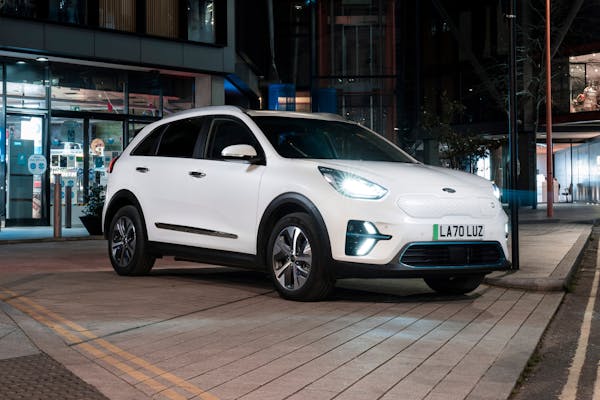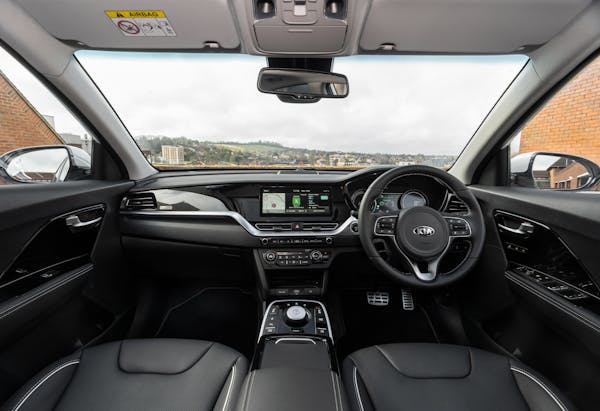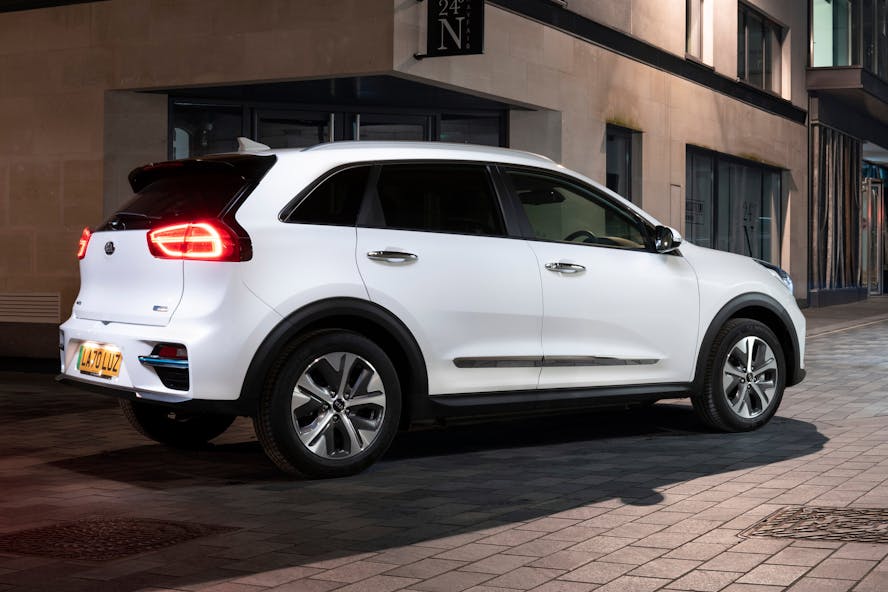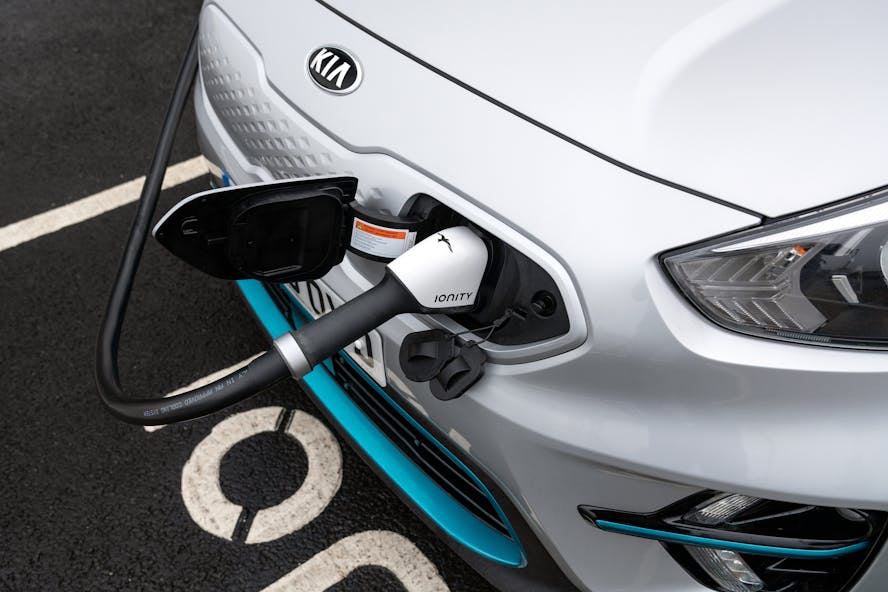Kia e-Niro review
The Kia e-Niro 64 kWh is a practical, family-friendly crossover with a 282-mile electric range and it’s one of the more affordable longer-range electric cars. The multi award-winning electric vehicle won ‘Car of the year’ back in 2019, as well as Best Electric Car 2020. It’s an impressive and comfortable car to drive filled with the latest EV tech.
This is a review for the Kia e-Niro
Kia e-Niro summary
-
Good to drive
-
Family friendly bodystyle
-
We achieved 317 miles at 60 mph on the motorway
-
A more affordable long-range EV option

Kia e-Niro design & powertrain
The fully electric Kia e-Niro is available with a 39kWh battery or a 64kWh ‘long range’ battery. The award-winning EV has a practical ‘compact crossover’ body style – but it’s only front-wheel drive rather than all-wheel drive. It’s a larger car than the Hyundai Kona lease option, with good space for rear seat passengers, and a decent-sized boot. The boot capacity (451 litres) is actually larger than that of the Niro Hybrid (382 litres) and the Plug-in Hybrid (324 litres) because the battery is mounted under the floor in the pure electric model. Inside the e-Niro there’s plenty of space making it comfortable for both the driver and passengers. The technology inside is easy to use and the controls are simple to navigate, the dashboard is the normal sensible and clear Kia approach.

What is the Kia e-Niro driving experience?
The e-Niro’s steering wheel has adjustments for height and reach, so most people should be able to get a comfortable driving position. The Kia e-Niro delivers a very refined and quiet driving experience, and there’s strong linear acceleration. With no manual gears or clutch, it’s also very easy to drive. The ride quality is comfortable on good road surfaces.
There’s an Eco mode and an Eco+ mode, accessible by holding down the drive mode button. ‘Normal’ drive mode is, predictably, perfectly fine for ‘normal’ driving. But if you select ‘Sport’ mode, then the e-Niro family crossover turns into a hot hatch. The e-Niro is front-wheel drive, and if you’re enthusiastic with the throttle, then the generous levels of torque (395 Nm) can overpower the limits of the grip of the front tyres, especially on wet roads.
There’s no gear selector for the automatic transmission – just buttons for Drive, Reverse and Park. But you can adjust the level of brake regeneration using steering wheel mounted paddles – which is a helpful substitute for the ability to change gear, especially on twisty, hilly roads.
Although the e-Niro is a relatively high vehicle because the (457kg) battery is located under the floor, there’s a low centre of gravity, which assists the handling, and there’s less roll through corners due to the low battery position. The e-Niro weighs 1,812 kg in total.
What is the Kia e-Niro driving range?
The Kia e-Niro has zero tailpipe emissions and a combined electric driving range of 282 miles based on the WLTP test. The city element of the WLTP test produces an impressive range figure of 382 miles. Of course, the range does depend on many factors, including your personal driving style and weather conditions. Although these longer ranges are proven to be achievable, we recommend a more realistic ‘real world’ range of around 235 miles.
The e-Niro has a battery heating system that is designed to insulate and warm up the battery while the vehicle is plugged in, minimising the adverse effects of cold temperatures.
Charging the Kia e-Niro from 0-100% using a 7kW home charge point will take just under 10 hours (so this can be done overnight). A charge from 0% to 80% using a rapid (50kW) DC public charge point takes 1 hour 15 minutes. This could be done in 54 minutes using a 100kW charger.
What does the Kia e-Niro cost?
The Kia e-Niro is available with the ‘long-range’ 64 kWh battery or a 39kWh battery. The ‘long range’ entry point, the e-Niro ‘2’ 64 kWh, costs £32,445 after the Plug-in Car Grant. There’s also the ‘3’ grade, which you’ll need to choose if you want satnav and heated front seats. The ‘4+’ grade gives you an 11kW onboard charger which allows you to benefit from 3-phase workplace charging.
The Hyundai Kona Electric, which shares the same powertrain as the e-Niro, has been rated very highly by us, so is there any benefit of the e-Niro over the Kona? The answer is yes if you’re looking for an electric car with more space. The e-Niro is 4,375mm long, versus 4,180mm for the Kona, so there’s 195mm of extra length. The e-Niro has 451 litres of boot space, compared to 334 litres for the Kona Electric, so that’s an extra 117 litres. With the rear seats down, the e-Niro has 1,405 v 1,116 litres – an extra 289 litres.
The Kia e-Niro has a Benefit in Kind tax rate of 1% in 2021/22. The e-Niro also has a 7-year / 100,000 mile warranty.


Conclusion
The Kia e-Niro has a practical body style, a potential of around 300 miles if driven carefully, and it’s relatively affordable. We’ve already rated the Hyundai Kona Electric very highly; whether you prefer the design of the Kona or the Niro is a subjective thing, but the e-Niro offers similar benefits to the Kona, but with more space. The e-Niro addresses many of the common objections to EVs such as insufficient driving range, high price and impractical body styles.